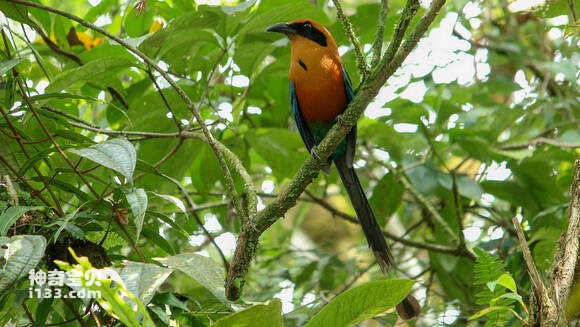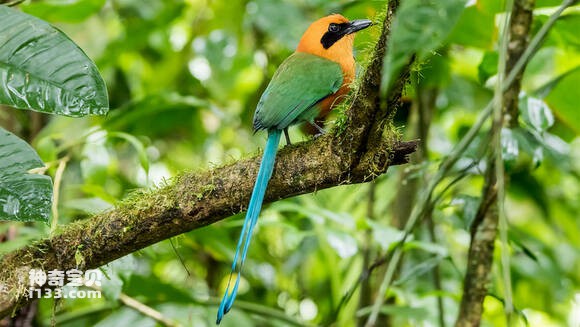Baryphthengus martii
IUCN
LCBasic Information
Scientific classification
- name:Baryphthengus martii
- Scientific Name:Baryphthengus martii,Rufous Motmot
- Outline:Climbing birds
- Family:
Vital signs
- length:About 46 cm
- Weight:Around 195g
- lifetime:No textual research information is available
Feature
The head, neck down to the chest and abdomen are cinnamon
Distribution and Habitat
It is found in Bolivia, Brazil, Colombia, Costa Rica, Ecuador, Honduras, Nicaragua, Panama, and Peru.
Native to tropical rainforests, secondary forests, and forest margins of Central and South America. Living between 900 and 1,400 m above sea level, it is a common resident bird in the lowlands and foothills of the Caribbean.
Appearance
Brown cud «¡ is about 46 cm long and weighs 19 The adult bird has a black face that resembles a mask. Like all members of the genus motmot, it has a large head and a short, broad beak that curves slightly downward, with serrated edges. The tarsals are unique, particularly short and almost fully fused to the inner toe and to the middle toe with only one posterior toe. The bases of the two toes facing forward are partially healed. The tail is long, the central tail feathers are long, and there is a section at the near end of the shaft, causing the end to form independent small feathers, forming a racket shape; The head of the species is cinnamon-colored from the neck down to the thorax, while the rest is covered with varying shades of blue-green and dark blue plumage. Red irises, black legs. Young birds are similar to adults, but are dimmer and have less distinctive facial masks.
Details
The scientific name Baryphthengus martii, the foreign name Rufous Motmot, there are 2

Brown green ð«¡ of the hooting owl It feeds on insects, crickets, mealworms, worms, earthworms, lizards, various invertebrates and small vertebrates, and sometimes fruit. When waiting for prey, it can calm down for a long time, and once it finds prey, it will suddenly pounce. The tail often swings from side to side or leans on a perch. Brown cud «¡ will be close to the water source activities, easy to drink and

Brown cuið « » In the water side of the cliff bank, earth embankment, well and mine hole or in the beach with a curved mouth to dig a hole for the nest, the digging time is generally from August to October (at this time is the rainy season, the soil is softer), the nest is a tunnel, 4- long During the breeding season from March to June of the following year, they return to the nest, where the female lays three to four white eggs, and the parents share the responsibility of incubation and brooding.
Listed on the International Union for Conservation of Nature (IUCN) 2012 Red List of Threatened Species ver 3.1 - Low Risk (LC).
Protect wild animals and eliminate wild meat.
Maintaining ecological balance is everyone's responsibility!








